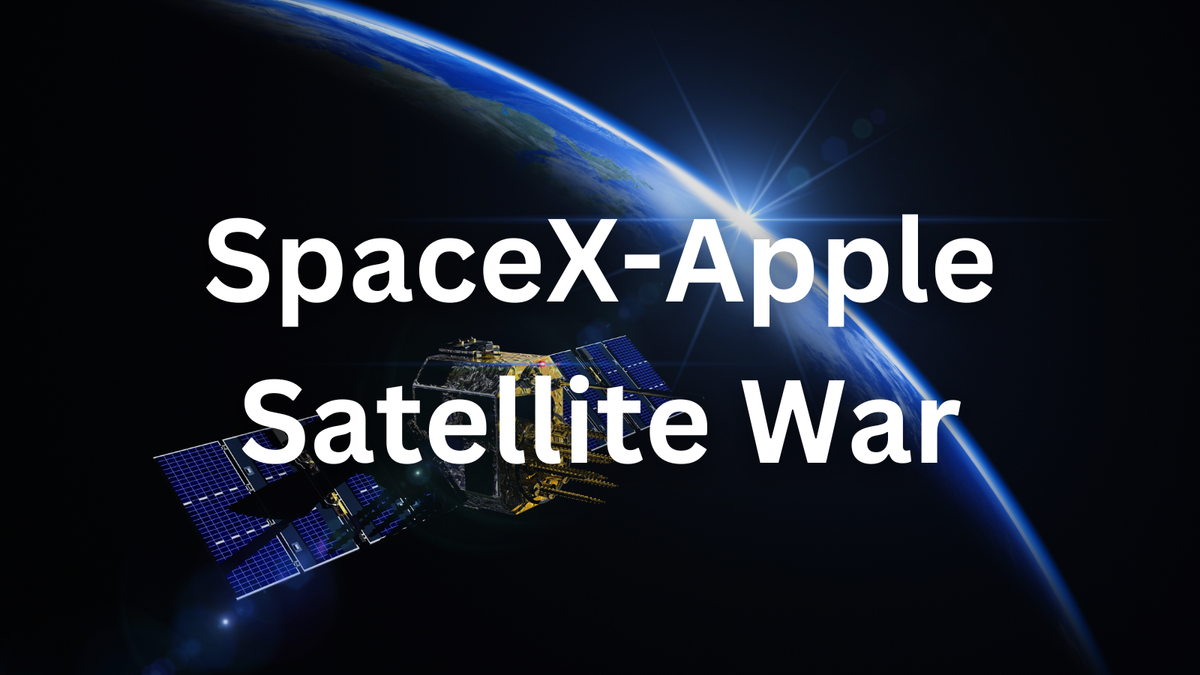Is the SpaceX-Apple Satellite War About to Crash Your iPhone's SOS Feature?

SpaceX and Apple’s fight over satellite frequencies could leave your iPhone’s emergency features—and Starlink’s internet—in the dark. A new report reveals Elon Musk’s SpaceX is lobbying to block Apple-backed satellite provider Globalstar from expanding its network, escalating tensions between the tech giants. If this battle over radio waves isn’t resolved, consumers might face spotty service, higher prices, or worse—a satellite monopoly. Let’s dive in.
🛰️ The Frequency Feud: What’s at Stake?
Satellite communication relies on radio frequencies, a finite resource that’s tightly regulated to prevent signal interference. Here’s why the SpaceX-Apple clash matters:
- Globalstar’s Apple Lifeline: Apple has invested hundreds of millions in Globalstar to power iPhone satellite features like Emergency SOS. SpaceX claims Globalstar’s proposed frequency expansion could overlap with Starlink’s signals.
- Failed Collaborations: Apple and SpaceX reportedly discussed partnering on satellite services but walked away—leading Apple to double down on Globalstar while SpaceX teamed with T-Mobile for a rival iPhone service launching this summer.
- Monopoly Risks: If SpaceX dominates key frequencies, competitors could be locked out, stifling innovation and enabling price hikes. Imagine paying $200/month for Starlink because there’s no alternative.
✅ Possible Fixes: Can Regulators (or Rivals) Save the Day?
Three paths could defuse this crisis—but none are guaranteed:
- Regulatory Intervention ✅: The FCC could enforce stricter frequency-sharing rules, forcing SpaceX and Globalstar to coexist. However, regulators often move slower than tech disputes escalate.
- Apple’s Plan B ✅: Apple might partner with other satellite providers like Iridium or Amazon’s Project Kuiper to bypass SpaceX entirely. But building new networks takes years and billions.
- SpaceX-T-Mobile’s Wild Card ✅: Their upcoming “Coverage Above and Beyond” service promises texting via Starlink satellites on iPhones—no Globalstar required. If successful, it could pressure Apple to collaborate with Musk after all.
⚠️ Roadblocks: Why This Fight Could Get Ugly
Potential dealbreakers loom:
- Technical Gridlock 🚧: Satellites can’t easily switch frequencies once launched. Globalstar’s existing 2.4 GHz band is already crowded, and SpaceX’s Starlink 2.0 satellites need adjacent bands for higher speeds.
- Regulatory Delays ⏳: FCC decisions often take 6-12 months—time Apple and SpaceX don’t have as they race to deploy next-gen networks.
- Consumer Fallout ⚠️: If Globalstar’s expansion is blocked, iPhone’s satellite feature may be limited to regions.
🚀 Final Thoughts: A High-Stakes Game of Cosmic Chicken
This isn’t just corporate drama—it’s a fight for control of the skies. Success hinges on:
- 📈 Compromise Over Conquest: Can SpaceX and Apple share frequencies without degrading each other’s services?
- 🤖 Innovation vs. Regulation🚀: Faster satellite tech risks outpacing oversight, creating a Wild West in low-Earth orbit.
- 📱 Your Next iPhone Upgrade: Will satellite features become a premium add-on or a standard safety net? The answer depends on who wins this war.
What’s your take: Should regulators force SpaceX and Apple to play nice, or is competition the only way to avoid a satellite monopoly?
Let us know on X (Former Twitter)
Sources: Hamish Hector. SpaceX and Apple reported spat could spell bad news for Starlink and your iPhone’s satellite communication features, 2025-04-02. https://www.techradar.com/phones/iphone/spacex-and-apple-reported-spat-could-spell-bad-news-for-starlink-and-your-iphones-satellite-communication-features










